The pulley arrangements to Fig.(A) and (B), are identical. The mass of the rope is negligible. In (A) the mass mi s lifted up by attaching a mass 2m to the other end of the rope.
In (B) m is lifted up by pulling the other end of the rope with a constant downward force F=2mg. In which case the acceleration of 'm' is more?
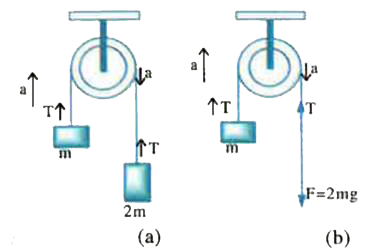 Solution in Telugu
Solution in Telugu
The correct Answer is:in case of (b)
Step by step video, text & image solution for The pulley arrangements to Fig.(A) and (B), are identical. The mass of the rope is negligible. In (A) the mass mi s lifted up by attaching a mass 2m to the other end of the rope. In (B) m is lifted up by pulling the other end of the rope with a constant downward force F=2mg. In which case the acceleration of 'm' is more? by Physics experts to help you in doubts & scoring excellent marks in Class 11 exams.
Topper's Solved these Questions
- BOOK - AAKASH SERIESCHAPTER - LAWS OF MOTIONEXERCISE - NUMERICAL EXERCISE ( LEVEL-2)13videos
LAWS OF MOTION
- BOOK - AAKASH SERIESCHAPTER - LAWS OF MOTIONEXERCISE - QUESTIONS FOR DESCRIPTIVE ANSWER5videos
LAWS OF MOTION
- BOOK - AAKASH SERIESCHAPTER - LAWS OF MOTIONEXERCISE - VERY SHORT ANSWER TYPE QUESTIONS14videos
LAWS OF MOTION
- BOOK - AAKASH SERIESCHAPTER - KINETIC THEORY OF GASESEXERCISE - Practice Exercise15videos
KINETIC THEORY OF GASES
- BOOK - AAKASH SERIESCHAPTER - MECHANICAL PROPERTIES OF FLUIDS EXERCISE - EXERCISE-343videos
MECHANICAL PROPERTIES OF FLUIDS
Similar Questions
A block A of mass 6kg is applied on a frictionless table. A thread tied to it passes over a frictionless pulley and carries a body B of mass 4kg at the other end. Find the acceleration of the system and tension in the thread (given g=10ms−2)
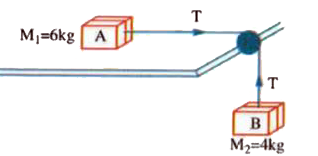 04:46View Solution
04:46View SolutionA massless inextensible string connects two masses m1=3kgandm2=1kg. Mass m1 is lifted until mass me touches the floor and then released. The initial height of mass m1 is h =1m. What height above the floor will the mass m2 rise after mass m1 falls on to the floor.
02:07View SolutionWhen a horse pulls a cart, which force helps the horse to move forward ?
05:34View SolutionThe kinetic energy of translation of 20gm of oxygen at 47∘C is (molecular wt. of oxygen is 32gm/mol and R=8.3 J/mol/K)
02:45View SolutionA U-tube contains water and methylated spirit separated by mercury. The mercury columns in the two arms are in level with 10.0cm of water in one arm and 12.5cm of spirit in the other. What is the specific gravity of spirit.
02:22View SolutionThe pulley arrangements of Figs. (a) and (b) are identical. The mass of the rope is negligible. In (a) the mass m is lifted up by attaching a mass 2m to the other end of the rope. In (b), m is lifted up by pulling the other end of the rope with a constant downward force F=2mg. The acceleration of m is the same in both cases
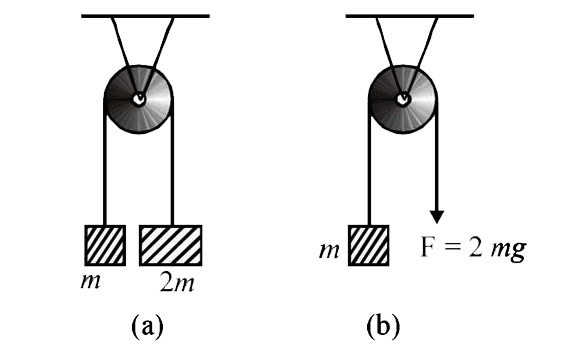 01:52View Solution
01:52View SolutionThe pulley arrangement in Fig are identical .The mass of the rope is negligble in figure the mass m is lifted up by atteched a mass 2m to the other end of the rope . In (b), m is lifed up by pulley the other end of the rope with a constant in both cases
View SolutionFigure shown two pulley arrangments for lifting a mass m . In case-1, the mass is lifting by attaching a mass 2m while in case-2 the mass is lifted by pulling the other end with a downward force F=2mg . If aa and ab are the accelerations of the two masses then (Assumme string is massless and pulley is ideal).
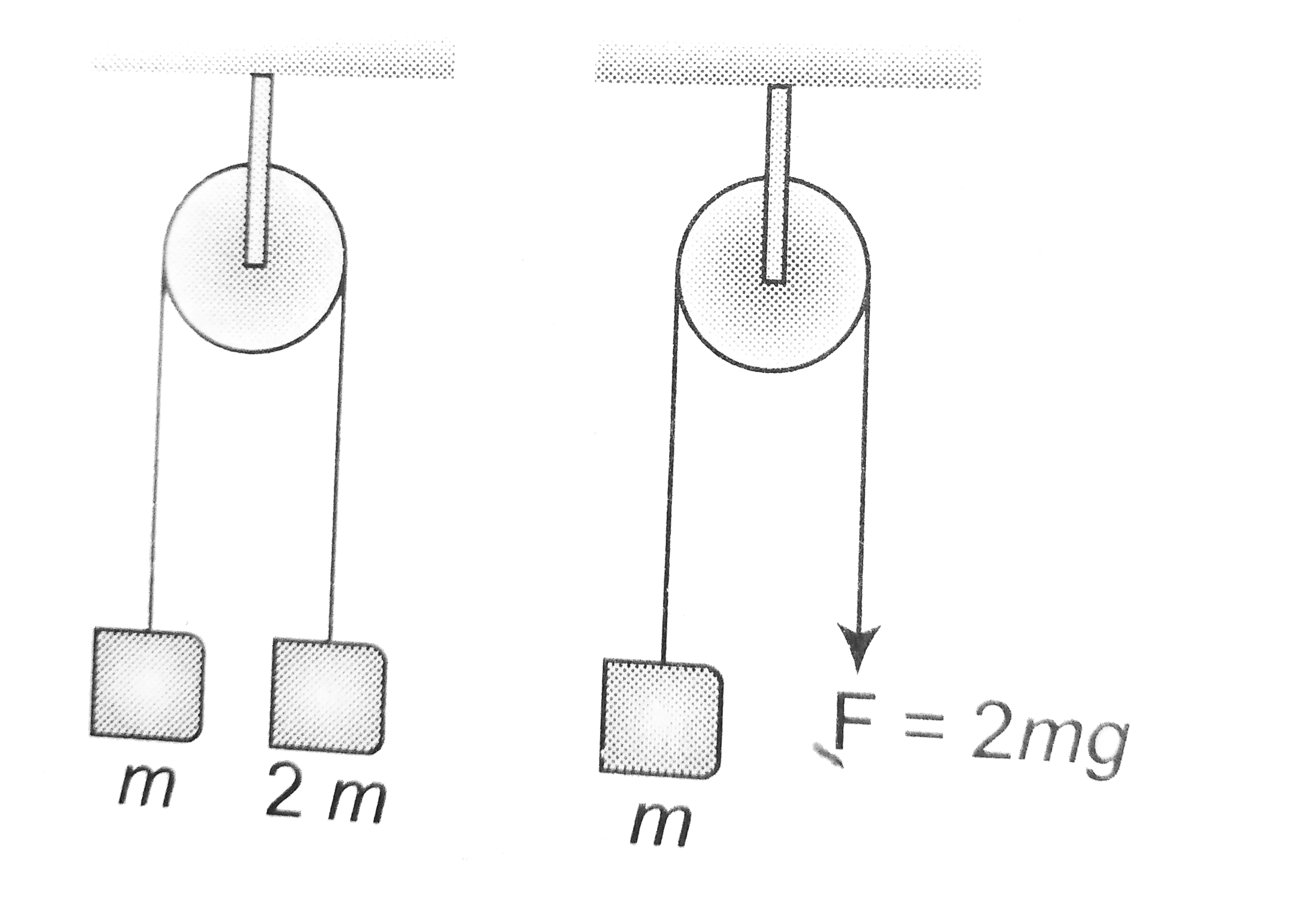 View Solution
View SolutionThe pulley arrangements shown in figure are identical, the mass of the rope being negligible. In case I the mass m is lifted by attaching a mass 2m to the other end of rope with a constant downward force F=2mg, where g is acceleration due to gravity The acceleration of mass m in case I is
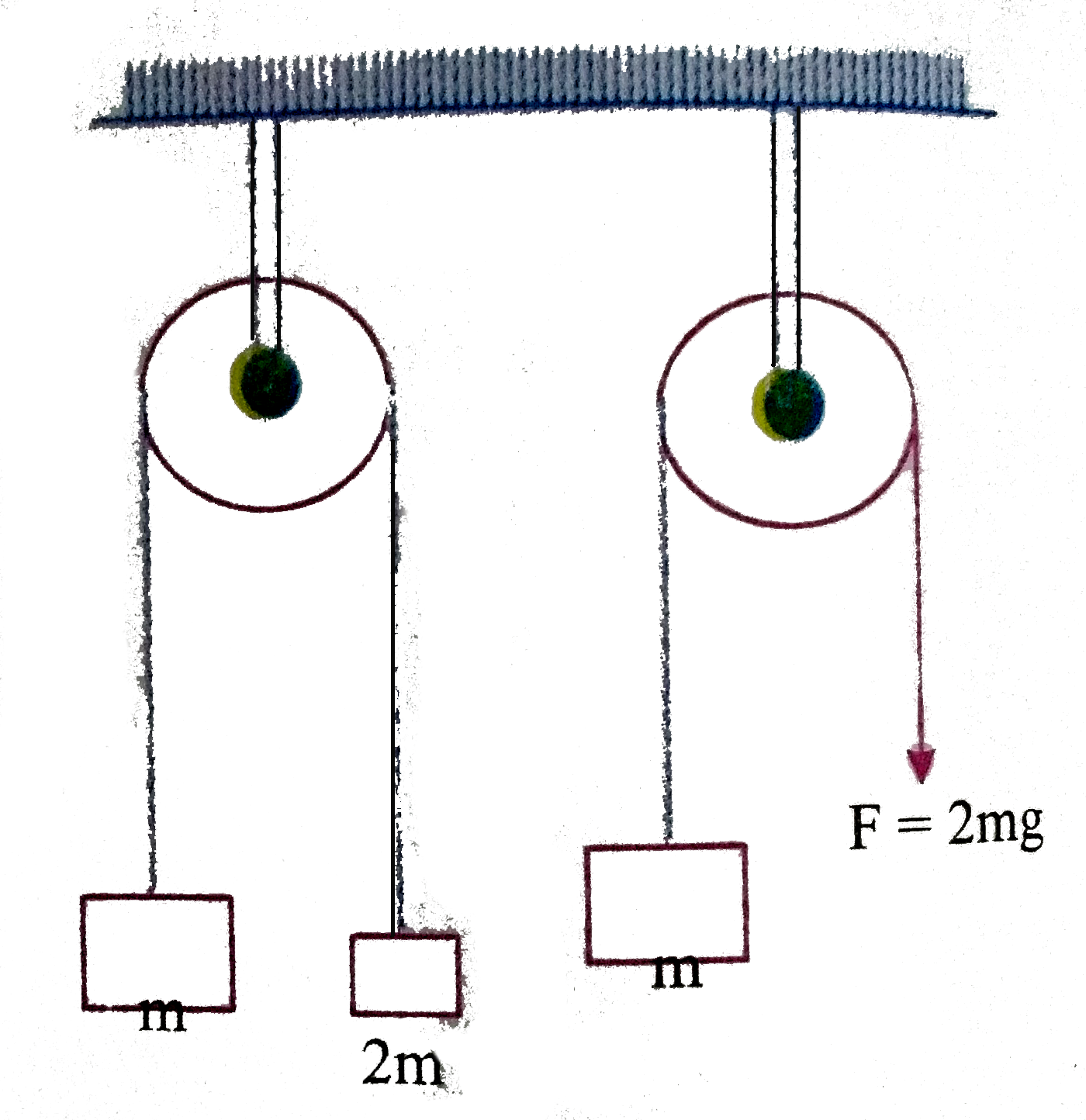 .View Solution
.View SolutionThe pulley arrangements of fig (a) and (b) are identical. The mass of the rope is negligible. In (a) the mass m is lifted up by attaching a mass 2 m to the other end of the rope. In (b) m is lifted up by pulling the other end of the rope with a constant downward force F = 2 mg. Which of the following is correct?
04:47View SolutionIn fig mass m is lifted up by attaching a mass 2m to the other end of the string while in fig
(b) m is lifted by pulling the other end of the string with a constant force F=2mg then:
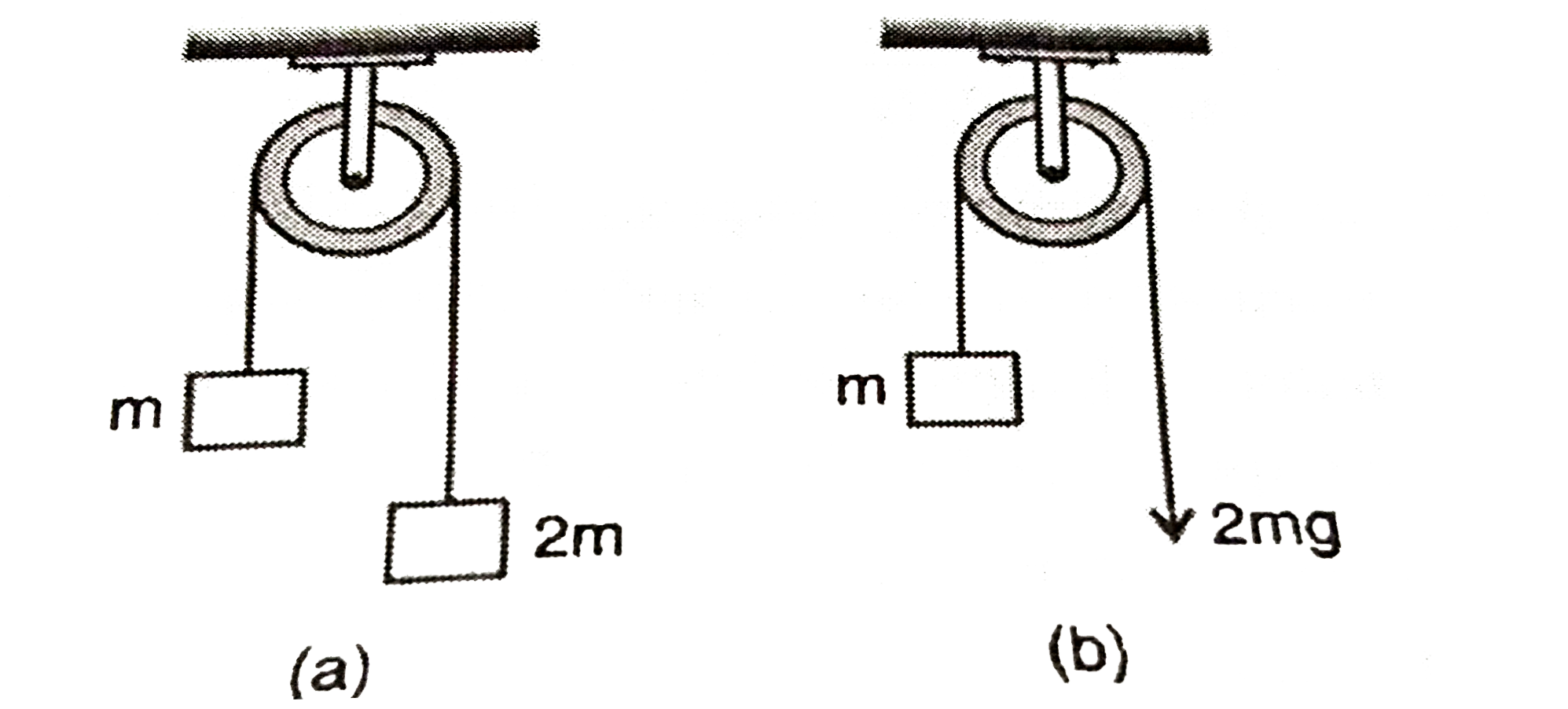 View Solution
View SolutionThe pulley arrangement of fig. are identical. The mass of the rope is negligible. In (a) mass m is lifted up by attaching a mass (2 m) to the other end of the rope. In (b), m is lifted up by pulling the other end of the rope with a constant downward force F =2 mg. In which case, the acceleration of m is more ?
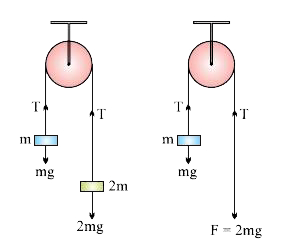 View Solution
View SolutionThe pulley arrangements shown in figure are identical, the mass of the rope being negligible. In case I, the mass m is lifted by attaching a mass 2m to the other end of rope with a constant downward force F = 2mg, where g is acceleration due to gravity. The acceleration of mass m in case I is
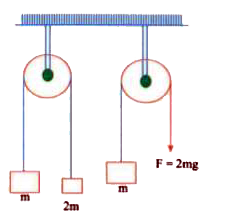 View Solution
View SolutionThe pulley arrangements of figures (a) and (b) are identical. The mass of the rope is negligible. In figure (a), the mass m is lifted up by attaching a mass 2m to the other end of the rope. In figure(b), m is lifted up by pulling the other end of the rope with a constant downward force F = 2 mg. Calculate the accelerations in the two cases.
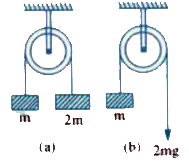 View Solution
View SolutionThe pulley arrangements to Fig.(A) and (B), are identical. The mass of the rope is negligible. In (A) the mass mi s lifted up by attaching a mass 2m to the other end of the rope.
In (B) m is lifted up by pulling the other end of the rope with a constant downward force F=2mg. In which case the acceleration of 'm' is more?
 02:40View Solution
02:40View Solution

